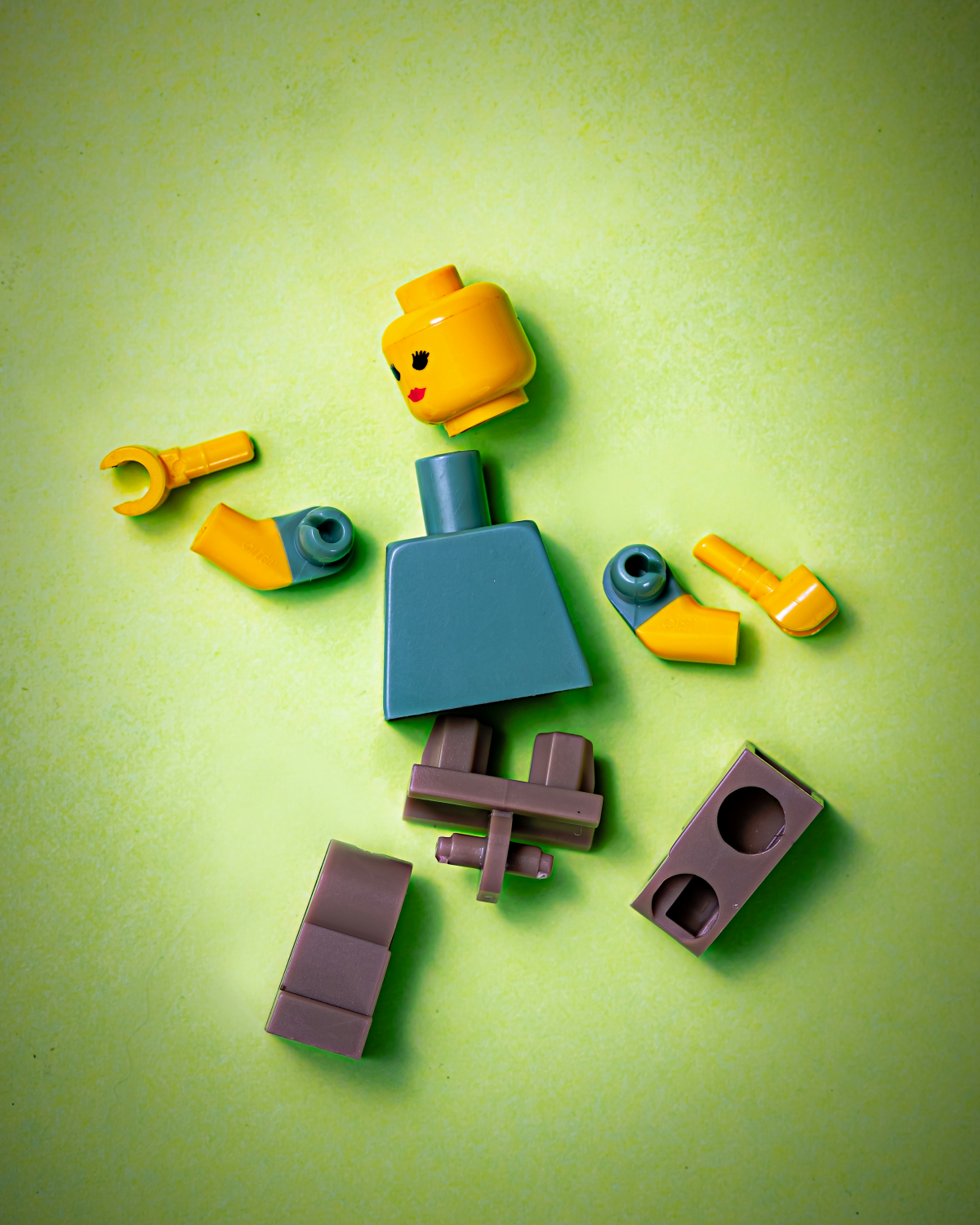Woke Up From a Plane Crash Dream? Here’s What It Actually Means
That jolt. The heart-pounding, cold-sweat feeling of waking up right after dreaming a plane was going down. It’s one of the most terrifying nightmares a person can have, and it can leave you feeling shaken for hours, even days.
In this article
- Why Our Brains Cook Up These Horrifying Scenarios
- Breaking Down the Dream: The Plane, the Crash, and You
- The Big Question: Where Were You in the Dream?
- What If I’m Scared to Fly Now? Or My Dream Had a Train?
- Practical Steps to Work With Your Dream
- When You Might Need a Co-Pilot (aka a Therapist)
- The Final Landing
- Galerie d’inspiration
So, before we go any further, let’s do a quick reset. If you’ve just woken up from one of these, take a second. Breathe in deep, and then let it out slowly. Feel the bed or chair you’re sitting on. You’re here, you’re safe. The fear you’re feeling is absolutely real, but the danger is not.
Okay. Now, let’s talk about what’s really going on. In my experience helping people navigate these things, the first and most important thing to know is this: a dream about a plane crash is not a psychic warning about the future. Your brain isn’t predicting a real disaster. Instead, it’s using a huge, dramatic, and unmistakable symbol to get your attention about something happening in your waking life. As scary as they are, these dreams are actually an opportunity. They’re a bright red flag from your subconscious, asking you to look at a part of your life that feels out of control or at risk of failure.

Why Our Brains Cook Up These Horrifying Scenarios
So why do our minds go to such extreme places when we sleep? It has a lot to do with how our brains are wired. During REM sleep, the part of our brain that handles emotions (the amygdala) is going full-throttle, while the part responsible for logic and reason takes a backseat. This is the perfect recipe for creating emotionally charged, vivid, and frankly, bizarre dream movies.
There are a couple of solid theories about why this happens. One popular idea is that dreams are like a virtual reality simulator for threats. By running a scary simulation—like a plane crash—your brain gets to practice its crisis response in a safe environment. It’s basically a flight simulator for your survival instincts.
Another angle is that dreams are all about processing feelings. During the day, we often push down anxiety, fear, or disappointment. We have to, right? We have jobs to do, families to care for. But at night, those suppressed emotions bubble up to the surface. The dream then creates a story, a metaphor, to give those feelings a voice. And honestly, what’s a better metaphor for overwhelming anxiety than a plummeting aircraft?

A Quick Word on Dream Interpretation Mistakes
Before we start decoding, let’s get one thing straight. It’s so easy to fall into a couple of common traps when trying to figure out a dream. Heads up on these:
- The Dictionary Trap: This is thinking a symbol always means the same thing for everyone (e.g., “plane = career”). The truth is, the meaning is deeply personal. Your relationship with the symbol is what matters.
- The Plot-Only Problem: Many people focus just on what happened in the dream, but they forget the most important part—how they felt. The terror, relief, sadness, or panic you experienced is your biggest clue. Don’t ignore it!
Breaking Down the Dream: The Plane, the Crash, and You
To really get it, you have to look at the main symbols. It’s less about a single meaning and more about how the pieces fit together for you.
So, what’s the plane all about?
A plane usually represents a journey in your life, but not just any old trip. It’s often tied to something big, fast-moving, and ambitious. Think about it:

- Your Career or a Big Project: We use phrases like a “high-flying career” or a project that’s “taking off.” The plane can easily be a symbol for your professional path.
- Your Life’s Direction: In a broader sense, it can be about your entire life journey. You’re moving forward, hopefully toward a destination you’ve chosen.
- Letting Go of Control: This one is huge. When you’re a passenger, you’ve handed over control. You’re trusting the pilots and the machine. This can symbolize a situation where you’re relying on someone else—a boss, a partner, a doctor—to guide things.
And the crash?
Yeah, this one’s a bit more obvious. A crash is a sudden, violent end to that journey. It’s the ultimate symbol of failure and loss of control.
- Fears of Failure: It could be a business collapsing, a relationship ending abruptly, or a personal goal shattering.
- ‘Crash and Burn’ Burnout: This phrase is a perfect fit. If you’ve been pushing yourself too hard for too long, your subconscious might be screaming that a total collapse feels imminent.
- Spiraling Situations: The dream captures that terrifying feeling of a situation in your life that’s spiraling downwards with nothing you can do to stop it.

The Big Question: Where Were You in the Dream?
Now we get to the heart of it. Your role in the dream changes everything. I’ve noticed a few common scenarios that point to very specific kinds of real-life stress.
Scenario 1: You’re a Passenger on the Crashing Plane
This is the most common version I hear about. It taps directly into feelings of powerlessness. You’re just along for the ride, and you have a horrifying feeling that the people in charge have lost control. In your waking life, this often means you’ve handed your power over to someone or something else.
Waking Life Connection: Are you in a job with a reckless boss? A relationship where your partner’s choices are creating chaos? I once worked with someone whose small business relied entirely on one unpredictable client. His nightly dreams of being a passenger on a crashing plane stopped once he started diversifying his client base, effectively taking back some control.

Your Mini-Action Step: Identify one tiny decision in this situation that is 100% yours to make. It could be as small as choosing how you react emotionally or deciding to say “no” to one small request. Write it down. This is the first step to reclaiming your power.
Scenario 2: You’re the Pilot of the Crashing Plane
Dreaming you’re the pilot carries a totally different weight. Here, the control was in your hands, and you feel like you’re the one failing. This dream screams fear of personal failure and a crushing sense of responsibility. You feel like the success of a major project, your family’s well-being, or your company’s future rests solely on you, and you’re terrified of letting everyone down.
Waking Life Connection: This is a classic dream for entrepreneurs, managers, and new parents. The pressure is immense. The dream is a direct reflection of performance anxiety and feeling responsible for everything and everyone.

Quick Reflection: Grab a journal and ask yourself: “What ‘plane’ am I flying right now that I’m terrified of crashing? Who could I ask to be my co-pilot (a mentor, a partner, a friend)?” You don’t have to fly it alone.
Scenario 3: You’re Watching the Crash from the Ground
If you see the crash from a distance, the meaning shifts. You aren’t in immediate danger, but you’re witnessing a catastrophe. This can mean you’re worried about someone else—a friend, a child, a colleague—who you feel is heading for disaster. You feel helpless to intervene. Alternatively, it can represent a part of your own life you feel disconnected from, like an old ambition you abandoned. Watching it crash can even bring a strange sense of relief, a sign you’re glad you’re no longer on that path.
Your Mini-Action Step: Decide on your role. Are you going to get involved or let it be? If it’s about a friend, your action might be to send a simple text: “Thinking of you. Let me know if you need to talk.” If it’s about an old goal, your action might be to take 10 minutes to reflect on why you let it go and if that was the right choice.

Scenario 4: You Survive the Crash
Surviving the crash is an incredibly powerful and hopeful symbol. Yes, the dream is still terrifying, but the ending points to your own resilience. It suggests that even if you’re going through a real-life failure—a divorce, a job loss, a business collapse—your subconscious believes you have the strength to get through it. The journey ended, but you didn’t.
Waking Life Connection: This dream often shows up when people are just starting to emerge from a crisis. The worst has happened, and they’re still here. The dream validates the trauma but also affirms their ability to rebuild from the wreckage.
What If I’m Scared to Fly Now? Or My Dream Had a Train?
It’s totally normal for the fear from the dream to bleed into your waking life. If you’re now anxious about an upcoming flight, remind yourself of the dream’s true nature: it was a metaphor for a life stressor, not a prediction. Acknowledge the fear, but connect it back to its real source. What was the actual problem the dream was pointing to?

And what if it wasn’t a plane but a car, train, or boat? The principle is the same! Just adjust the symbol. A car crash might point to your individual path and personal drive. A train crash could relate to a life path that feels more rigid or set by society. The core message about a loss of control or a fear of failure remains the same.
Practical Steps to Work With Your Dream
Okay, so you have a message from your subconscious. Now what? Here’s a simple process to turn that scary dream into a useful insight.
- Get It Down on Paper (or in your Phone): Dreams fade fast. The moment you wake up, write down everything you remember. Who was there? What did you see or hear? No detail is too small. Time-Saving Tip: Don’t have time to write? Grab your phone and make a voice memo. Just ramble about everything you remember. It’s faster and often captures more emotional detail!
- Name the Core Feeling: This is key. Was it pure terror? Sadness? Guilt? Or maybe, weirdly, a sense of relief? Be honest. That core emotion is the thread that connects the dream to your waking life.
- Play Detective: With that feeling in mind, scan your life. Ask yourself: Where do I feel this same emotion? What “journey” in my life (career, relationship, health plan) feels like it’s in danger? Who was in control in the dream, and who is in control of that situation in my life?
- Take One Small Action: A dream is a diagnosis. The final step is the treatment. Based on your insight, what’s one small thing you can do? If the dream was about burnout, maybe the action is blocking off 30 minutes for a walk tomorrow. If it was about feeling powerless in a relationship, maybe the action is to start a conversation. Acting on the message tells your subconscious, “I heard you,” which can often make the nightmares stop.

When You Might Need a Co-Pilot (aka a Therapist)
While working through your dreams on your own can be powerful, sometimes you need to call in a professional. Please consider talking to a therapist if:
- The nightmares are recurrent and ruining your sleep.
- The anxiety from the dream is sticking with you all day.
- You suspect the dream is connected to a past trauma.
- The feelings the dream brings up just feel too big to handle alone.
I know therapy can seem daunting, especially when thinking about cost. Good to know: sessions can often range from $100 to $250, but many therapists offer a sliding scale based on income. It’s worth asking! You can also look for more affordable options through online directories like Open Path Collective or by checking with local university training clinics. Asking for help isn’t a sign of failure; it’s a sign of strength.
The Final Landing
A plane crash dream is, without a doubt, a startling wake-up call. It uses a terrifying image to force you to pay attention. But it’s not a curse. Think of it as your mind’s own air traffic controller, frantically waving flags to warn you about turbulence ahead. It’s a message from a part of you that’s trying to help you navigate your journey, adjust your course, and find a safer place to land.

Galerie d’inspiration

Nearly 8% of the population experiences nightmares on a weekly basis, often triggered by stress or significant life changes, according to research in the Journal of Clinical Sleep Medicine.
If you find these anxiety-fueled dreams are becoming a regular feature of your nights, it might be a signal that your baseline stress levels are too high. This isn’t just about the dream itself, but about your daily mental state. Consider integrating a mindfulness practice using an app like Calm or Headspace for 10 minutes before bed. Their guided meditations and sleep stories are specifically designed to help lower cortisol levels and ease the amygdala’s hyperactivity, making your brain less likely to ‘simulate’ a crisis when you fall asleep.










